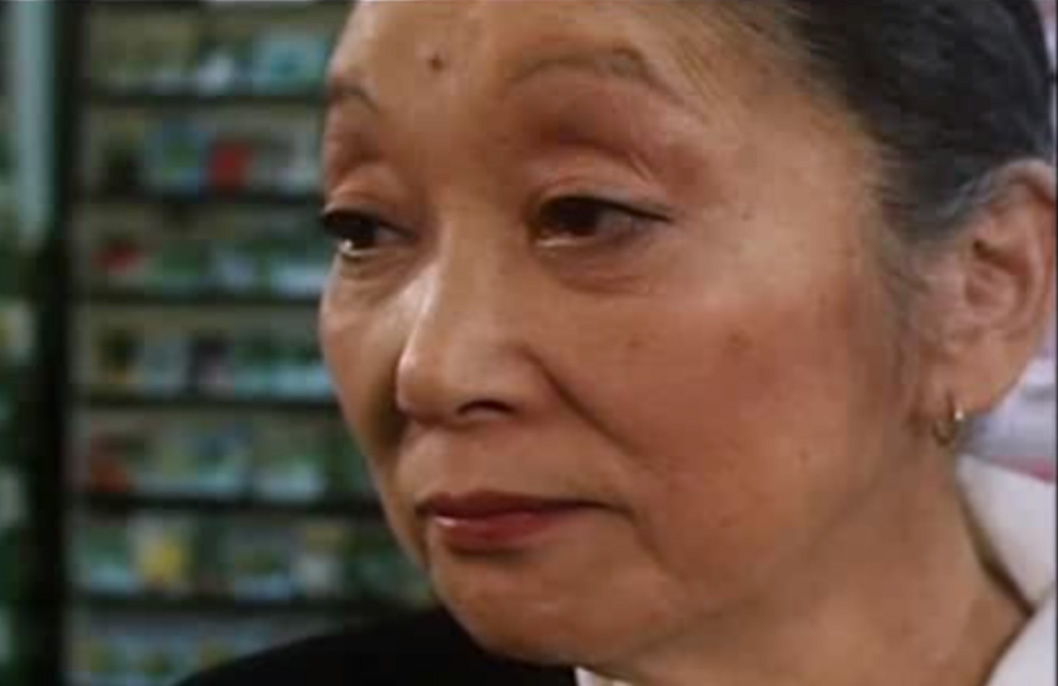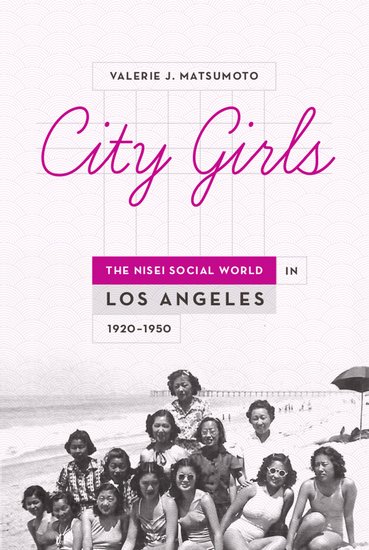March 10, 2016
Citizen 13660, Farewell to Manzanar, and Nisei Daughter, are perhaps the most widely known accounts of wartime incarceration by women, but there are many less widely known works that also deserve our attention. To commemorate Women’s History Month, Densho Content Director Brian Niiya presents a personal list of ten works on Japanese American women in and out of the camps that are “some combination of informative, entertaining, moving, and unusual.”
American Fish by Jessie Wine (short film, 1995)
A short film by Jessie Wine based on a short story by R.A. Sasaki that captures a classic JA moment: two Nisei women run into each other at an Asian market; though each knows she knows the other, neither can figure out exactly who the other is and each tries to figure it out without tipping off the other. As in a typical such Nisei encounter, the concentration camps quickly enter the picture. The ten-minute film can be viewed online here.
City Girls by Valerie Matsumoto (Oxford University Press, 2014)
Though I’ve largely shied away from academic works here, I must mention the latest book by historian Valerie Matsumoto, our community’s most dedicated chronicler of Japanese American women’s history. City Girls focuses on Nisei girls’/women’s clubs in Los Angeles from the 1920s on and the various roles these clubs played in the lives of these women. One chapter focuses on the wartime experience and another on the rebuilding years immediately after.
East Bay Japanese for Action, Our Recollections (East Bay Japanese for Action, 1986)
At a Berkeley area senior home in the 1980s, organizers began a life writing class for the residents. (Both because Issei women tended to be a decade or more younger than their husbands and because women typically outlive men, the vast majority of the residents were women.) Though reluctant at first, the class members eventually took to the task. This volume complies fifteen autobiographical essays by Issei and Kibei women both in the original Japanese and in English translation. The pieces are incredibly moving, particularly if you had an Issei grandmother. Very different in character than the oral history accounts we are used to seeing, this is unique and valuable work.
Emi by Michael Toshiyuki (short film, 1979)
Short film by Michael Toshiyuki Ono about a Nisei woman returning to visit Manzanar and her prewar community on Bainbridge Island, Washington, for the first time some thirty-five years after her forcible removal. Made in 1979 for the public television series Pearls, Emi captures that moment in time when Nisei were reluctant to talk about the war years and their Sansei children were kept largely ignorant about the family history. Emi’s visits to Manzanar and to see old family friends on Bainbridge are extremely moving.
Gasa Gasa Girl Goes to Camp by Lily Yuriko Nakai Harvey (University of Utah Press, 2014)
One of a number of worthwhile memoirs by Nisei women, this one is enlivened by the author’s watercolor paintings and by her unusual frankness about the travails the incarceration brought on. Read a full review here.
The first popular history of Japanese American women, this landmark book accompanied the exhibition Strength and Diversity: Japanese American Women, 1885–1990, organized by the Women’s Exhibit Committee of National Japanese American Historical Society in part as a response to the male focus of the Smithsonian’s Institution’s A More Perfect Union exhibition. Historian Alice Yang wrote (about the exhibition), “Redefining heroism, Nakano… proclaimed that women who comforted children traumatized by the barbed wire, who cared for elderly parents, and who helped their families cope with the incarceration were important historical figures.”
The Legend of Miss Sasagawara by Hisaye Yamamoto (short story, 1950)
There are relatively few memorable short stories set in camp, of which this one is by far the best known. A classic by perhaps the most Japanese American story writer, this is typical Hisaye Yamamoto: the unreliable narrator, the seemingly breezy tone, and the surprising and moving ending, in the service of a tale about a seemingly “crazy” woman in camp. It is the subject of numerous academic essays, one of which I have to mention: in the recent special issue of Social Process in Hawai’i that focuses on the Honouliuli internment camp, Amy Nishimura writes of the striking parallels between two real life Buddhist priestesses interned there and the fictional Miss Sasagawara.
Sisters Matsumoto by Philip Kan Gotanda (play, 1999)
Though his ouvre is filled with allusions to the concentration camps, acclaimed playwright Philip Kan Gotanda has never written a “camp play.” Sisters Matsumoto, set in Stockton in late 1945 immediately after the return of Japanese Americans to the West Coast, may be the closest he’s come. The story about three once prosperous sisters returning to their ruined farm illuminates the long impact of incarceration—and the conflict between those advocated collaboration and those who protested—even after the war. The play is published in Gotanda’s collection No More Cherry Blossoms: Sisters Matsumoto and Other Plays (University of Washington Press, 2005) and a copy of the script is available on the playwright’s website.

Weedflower by Cynthia Kadohata (Atheneum, 2006)
One of the best of the many books for children/young adults set in the camps, Cynthia Kadohata’s sets her story in Poston and is in part a coming-of-age novel whose young female protagonist is in the sixth grade when the war begins. The book is notable for the interaction between the Japanese American inmates and the Native Americans on whose land the camp was built. Also still worthwhile are Yoshiko Uchida’s landmark camp books, Journey to Topaz (1971) and Journey Home (1977), which feature a similarly aged female protagonist as well as her exclusion themed book for younger children, The Bracelet (1993).
Why She Left Us by Rahna Reiko Rizzuto (HarperCollins, 1999)
Novel by Rahna Reiko Rizzuto that tells the story of a Japanese American family from the 1920s to the 1990s, with a focus on the war years. The central character is a Nisei woman who bears two children out of wedlock, one just prior to the war and one in a horse stall at Santa Anita and like many works by Sansei/Yonsei, this one involves family secrets kept from the postwar generation by the generation that experienced the incarceration. Other worthwhile novels by postwar generation JA women include Julie Shigekuni’s A Bridge Between Us (another family saga that takes place between 1970 and 1990, though the concentration camps of course loom), Julie Otsuka’s When the Emperor Was Divine (set in camp and told from the perspectives of both female and male characters), and R.A. Sasaki’s The Loom and Other Stories (a connected cycle of short stories centered on women, several of which incorporate the camp experience), among others.
—
[Blog header: A still from American Fish, 1995)


